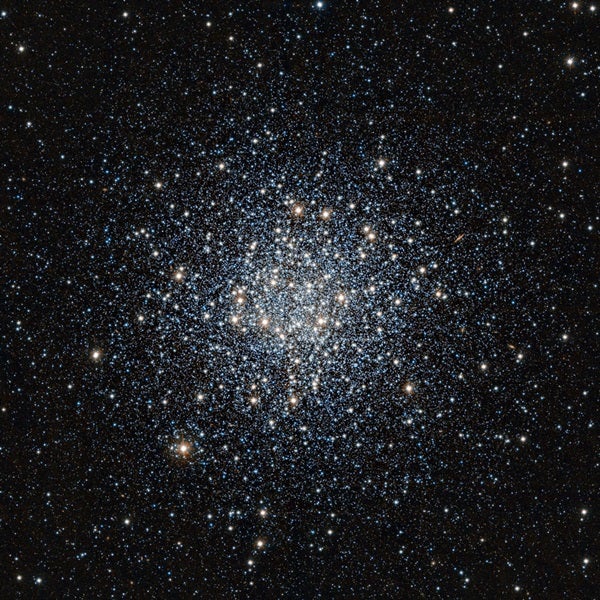M55 is one of the most unsung yet beautiful globular star clusters in the night sky. It’s also one of the most southerly globulars in Charles Messier’s catalog. Abbe Nicolas Louis de Lacaille discovered it in 1751 while surveying the southern stars from the Cape of Good Hope. Through his small telescope (inferior to today’s binoculars) he recorded it as looking like the “faint nucleus of a large comet.” Messier’s report of it was not much different: “a whitish patch about 6′ across.”
Today we know this close (about 17,600 light-years distant) and ancient (roughly 12.5 billion years old) relic bristles with up to perhaps 100,000 suns spread loosely across 100 light-years of space. This senior swarm of gravitationally bound starlight is approaching us at more than 100 miles per second (62 kilometers per second) on an elliptical orbit that arcs through the distant halo of our galaxy.
While all globular clusters are richly populated with metal-poor aged stars, M55 is exceptional in this regard: On average, its stars have only about 1 percent of the fraction of heavy metals found in our Sun, making M55 one of the most metal-poor globular star clusters known. It also has a possible tidal extension — not visible to amateur equipment — which could be caused by the tidal shocks that buffet the cluster when its orbit takes it swooping through the disk of the Milky Way.
Under dark skies (which are required to see this cluster well), keen-eyed observers have spied its 6th-magnitude glow without optical aid about 8° east-southeast of Zeta (ζ) Sagittarii. Binoculars will present the cluster well, as a uniformly hairy star. The telescopic view becomes increasingly more magnificent as power is added. At low power, the cluster’s uniform glow splinters into teasing whispers of structure. The cluster begins to blossom at 70x when some of its brighter members (11th magnitude) pulse in and out of view across the globular’s 20′-wide face. Higher magnifications bring out more stars. Those in M55 on the horizontal branch — the stage of stellar life that red giants evolve into — shine at an average magnitude of 14.4, meaning that moderate-sized telescopes can resolve the cluster reasonably well.
Make sure to explore Astronomy’s full list of 101 cosmic objects you must see. New entries will be added each week throughout 2022.
To get the latest astronomical news and observing content delivered directly to your door, subscribe to Astronomy magazine today!










